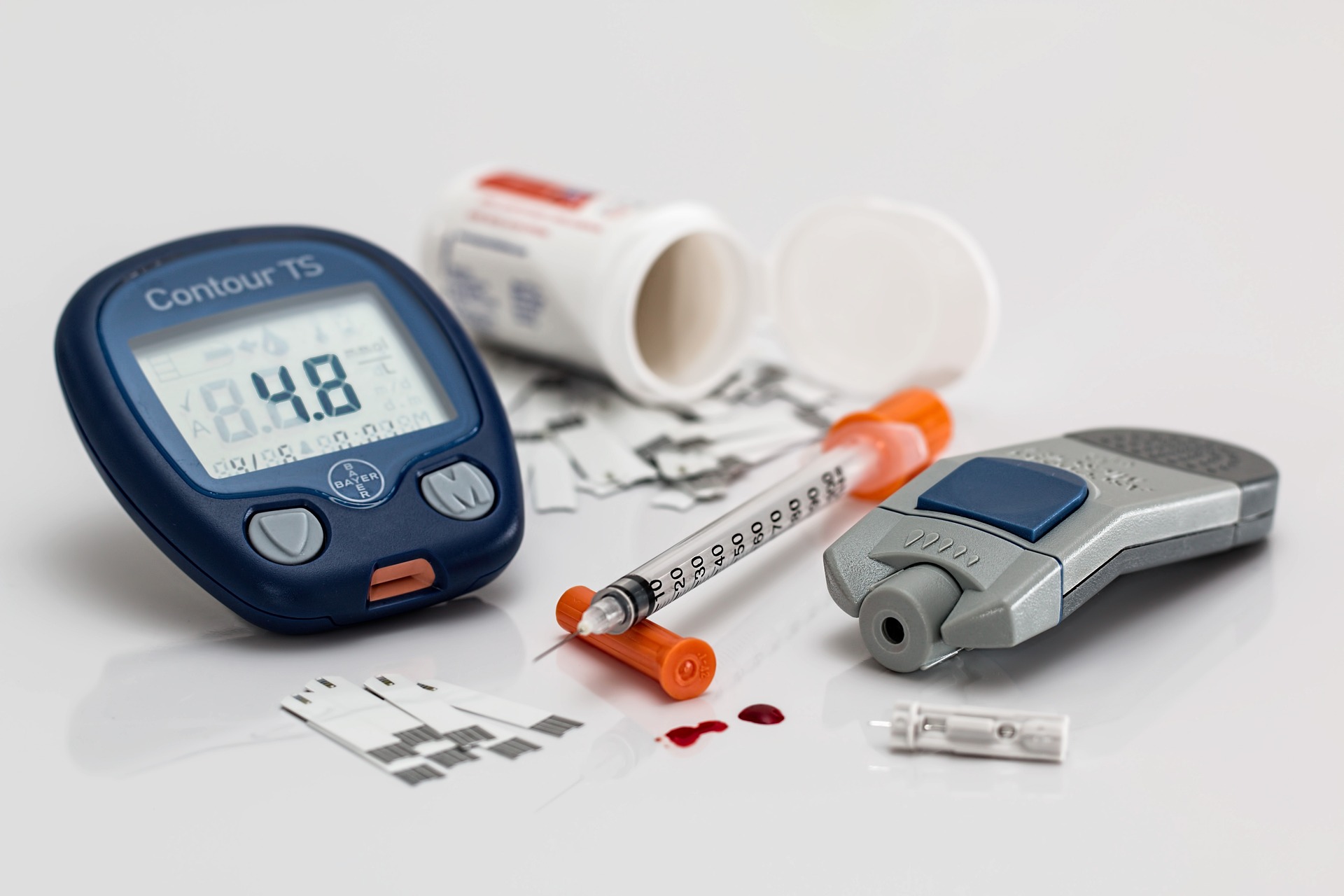
Diabetes Mellitus
Definition:
Diabetes Mellitus is a chronic metabolic condition caused by elevated blood sugar levels in the blood, with time, it causes target organs damage. The disease is characterized by either low insulin levels or insulin resistance.
| State | Fasting | Post-Prandial | HbA1C |
| ✔Normal | 70-99mg/dL | <140mg/dL | <5.7% |
| ❕Pre-Diabetic | 100-125mg/dL | 140-199mg/dL | 5.7-6.4% |
| ❗Diabetic | >125mg/dL | >199mg/dL | >6.4% |
1. Insulin-Dependent Diabetes Mellitus(Type-1 DM):
In IDDM, also called Juvenile Diabetes, the pancreas produces low insulin or does not produce at all. Such individuals are completely dependent on exogenous insulin for their lifetime.
2. Non-Insulin Dependent Diabetes Mellitus(Type-2 DM):
In NIDDM, body organs(fat, liver, and muscle) become resistant to insulin, which is often associated with obesity. According to the American Society of Metabolic and Bariatric Surgery, 90% of people with NIDDM are overweight or obese.
Symptoms:
1. Type-1 Diabetes Mellitus(IDDM):
Individuals mostly suffer from this disease at a young age. It is characterized by;
- Polyphagia(Increased hunger)
- Polyuria(Increased urination)
- Polydipsia(Increased water intake)
- Weight loss
- Decreased Vision
- Fatigue
2. Type-2 Diabetes Mellitus(NIDDM):
Individuals suffering from NIDDM are mostly more than 40 years old, and 90% of them are overweight.
Its symptoms are common with Type-1 Diabetes Mellitus with additional complications, i.e.,
Complications of Diabetes Mellitus:
1. Nephropathy is the most lethal complication of Diabetes Mellitus. In 2011, about 26 million people in the USA had Diabetes Mellitus; out of them, around 200,000 had ESRD. It is characterized by persistent elevated Albuminuria(>300mg/dl) over 6 months, tested 2-3 months apart, or decreased GFR(<90mL/min).
2. Neuropathy is characterized by partial or complete loss of neuronal function of the nervous system(peripheral neurons are affected first).
- Peripheral neuropathy(Limbs are affected, which can lead to severe foot ulcers)
- Autonomic neuropathy(Leads to hypoglycemia unawareness, bowel, and sexual dysfunction)
- Proximal neuropathy(Causes pain and weakness of buttock, thigh, chest and abdominal muscles)
- Polyneuropathy(e.g., one-sided facial paralysis, decreased power of the hand, decreased vision)
3. Retinopathy is a slow-developing process that develops due to persistent blood vessel damage due to elevated sugar levels in the blood. It has three stages;
- Background retinopathy
- Pre-Proliferative retinopathy
- Proliferative retinopathy
4. Diabetic Keto-acidosis is a medical emergency in which RBS>300mg/dL is characterized by increased thirst, frequent urination, Kussmaul breathing, and abdominal pain(leading to misdiagnosis).
Urine ketones will be positive in DKA. It should be managed with hospitalization and aggressive treatment.
Prevention is Better than Cure:
Type-1 Diabetes Mellitus, in most cases, is caused by an auto-immune inflammatory process, by default, which has no prevention.
Adopting preventive measures can delay the onset of Type-2 DM. These measures become significant when there is a strong family history of DM.
- Weight Control Strategy
- Keep a balance of nutrition
- HbA1C testing 2 times per year
- Regular exercise
Treatment of Diabetes Mellitus:
Type-1 DM:
Treatment should be initiated after consultation with healthcare professionals. The common treatment outline is as follows;
- Taking insulin
-Short-acting insulin(e.g. Humulin R)
-Rapid-acting insulin(e.g. Glulisine, Lispro)
-Intermediate-acting insulin(e.g. Humulin N)
-Long- and ultra-long-acting insulin(e.g. Glargine, Detemir)
- RBS monitoring
- Eating healthy
- Regular exercise
- HbA1C testing every 6 months
Type-2 DM:
Treatment of NIDDM starts conservatively;
- Eating low carbs and calorie diet
- Weight loss
- Regular exercise
Medications:
Some of the most common medicines include;
| Drug Class | Generic/Brand Names | Side Effects |
| Metformin | Glucophage, Fortamet | Hypoglycemia, Diarrhea |
| Sulfonylureas | Glimepiride, Glipizide, Glyburide | Hypoglycemia, Weight gain, Skin reaction |
| Meglitinides | Nateglinide, Repaglinide | Hypoglycemia, Muscle weakness, Tremors |
| Thiazolidinediones | Pioglitazone, Rosiglitazone | Weight gain, Heart failure, Edema |
| DPP4-inhibitors | Linagliptin, Saxagliptin, Sitagliptin | Steven Johnson Syndrome, Acute renal failure, Pancreatitis, Flu-like symptoms |
| GLP-1 receptor agonists | Semaglutide, Exenatide | Ozempic face, Bowel obstruction, Gastric pain, Gastroparesis |
| Alpha-Glucosidase inhibitors | Miglitol, Acarbose | Bloating, Deranged liver function |
| SGLT-inhibitors | Dapagliflozin, Empagliflozin | Hypovolemia, Genital mycosis, Arthralgia, DKA |
| GIP and GLP-1 receptor agonists | Tirzepatide | Bloating, Hair loss, Heart Burn |
| Insulin | Lispro, Aspart, NPH, Glargine | Lipodystrophy, Hypoglycemia, Weakness, Injection site infections |
Surgical Treatment:
Type-2 DM can be treated by weight loss surgeries, i.e., Bariatric Surgeries and Liposuction, etc.
Weight loss will result in increased insulin sensitivity. Surgical options will only be considered for individuals who are morbidly obese and who can’t control their weight by conservative methods.
